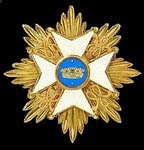The Swiss Regiment Galatty, first raised 1567, became the Gardes Suisses in 1616. Ranked behind the Gardes Françaises. If on campaign without the Gardes Françaises ranked behind the most senior French line infantry regiment present.
4 battalions strong, each of 600 men and officers.
During the War of the Spanish Succession were at Louvain 1701, Eckeren 1703, on the Rhine 1704, Nodoue 1705, Ramillies 1706, Oudenarde 1708, Malplaquet 1709, Douai, Le Quesnoy and Bouchain in 1712 and Landau in 1713.
During the War of the Austrian Succession was at the battles and sieges of Coutrai, Fontenoy, Raucoux, Lauffeld and Maastricht.
Began the Seven Years War war in Paris. Two battalions were sent to the Province of Aunis to defend against a possible British landing late in 1757 but were recalled on reaching Tours. In 1758 two battalions went to the coast of Flanders to garrison Dunkirk and St Omer from March to December.
From 1759-60, 200 unfortunate men of the regiment were embarked on Thurot's squadron which ultimately headed for Ireland. They were captured when the three frigates of the expedition were encountered and taken by British frigates but returned to France in May that year.
In 1762 two battalions served in Germany under Soubise. They were at the combat of Schaffhausen in July 3rd, and on July 15th and 16th at the battle of Vellinghausen. In September they were at the siege of Meppen and then returned to France in October. In late May 1762 two battalions joined the Army of the Lower Rhine under Condé. They saw no action until the combat of Grüningen on 25th August. In December they moved to Landau when the French evacuated Western Germany.
[This is mostly a summary of the account in Kronoskaf as I have no independent source of information.]
And this was the uniform in 1757:

























